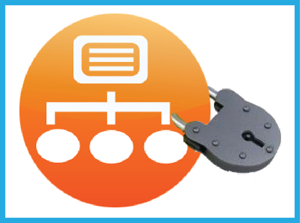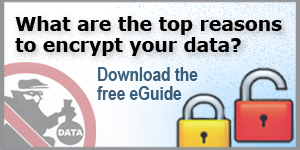Learn how businesses and organizations can take advantage
of cloud benefits, while protecting valuable assets.
-

#1: Security Risks Associated with Data Location
Some users perceive that data stored locally is more secure, while others may perceive the cloud as having a greater level of security. ASTI’s CiS solution is not just a cloud-only storage option. Users have the choice of storing data locally and/or in the cloud providing an unprecedented level of control over where to store the data (locally or remote), minimizing security risks. As an alternative, data can be stored in both locations ensuring that a copy of last resort is always available for disaster recovery purposes.
-

#2 : Loss of Control Over Data
ASTI’s Archive Management Software protects against loss of control over data by providing centralized control, monitoring and tracking of all data stored within the archiving ecosystem. Data is cached in RAID, after which it is automatically committed to media or cloud based upon user-defined, configurable policies. This eliminates multiple access points to the data stored in the cloud as data must always be retrieved through the Archive Management Software, providing users with powerful centralized control over data.
-

#3 : Unauthorized Access
According to the cloud surveys evaluated, unauthorized access is the one of the biggest concerns among current and potential cloud users. ASTI's secure Archive Management Software acts as a gatekeeper for data stored locally or on the cloud. Access to data is password enabled via configurable user access controls, including support for multiple authentication services including Active Directory, local user level security or LDAP.
-

#4 : Security & Vulnerability of the Cloud
Consistent security and protection across IT infrastructures is of foremost concern for protecting data on premises and in the cloud. Sixty-five percent of respondents to one recent cloud survey cited that data encryption is the most effective method of protecting data in the cloud.
Once data is stored in the cloud, it could still be vulnerable to unauthorized or fraudulent access; therefore, ASTI recommends encrypting all cloud-stored data. ASTI’s encryption option meets U.S. and Canadian guidelines with FIPS 140-2 compliant, AES 256-bit encryption algorithms with license key management implemented in accordance with NIST Special Publication 800-57 Recommendations for Key Management such that all keys are stored remotely away from the data while simultaneously keeping control of encryption keys in your hands rather than the cloud providers. This provides the highest level of protection for data stored in the Cloud.
-

#5 : Network Security
Data being transferred over Wide Area and Local Area Networks can be encrypted, but this is not guaranteed. It depends on the applications, protocols, configuration options and 3rd party software that might be involved. ASTI’s encryption method ensures data is encrypted prior to being transmitted to the cloud, ensuring protection of sensitive data during transmission and at rest.
Encryption is the only sure method of assuring that data is secure while stored off-premises. Users can enable optional encryption for some or all of the data stored on cloud and/or media. Reference #4 above
- 1
-

#1: Security Risks Associated with Data Location
Some users perceive that data stored locally is more secure, while others may perceive the cloud as having a greater level of security. ASTI’s CiS solution is not just a cloud-only storage option. Users have the choice of storing data locally and/or in the cloud providing an unprecedented level of control over where to store the data (locally or remote), minimizing security risks. As an alternative, data can be stored in both locations ensuring that a copy of last resort is always available for disaster recovery purposes. -

#2 : Loss of Control Over Data
ASTI’s Archive Management Software protects against loss of control over data by providing centralized control, monitoring and tracking of all data stored within the archiving ecosystem. Data is cached in RAID, after which it is automatically committed to media or cloud based upon user-defined, configurable policies. This eliminates multiple access points to the data stored in the cloud as data must always be retrieved through the Archive Management Software, providing users with powerful centralized control over data. -

#3 : Unauthorized Access
According to the cloud surveys evaluated, unauthorized access is the one of the biggest concerns among current and potential cloud users. ASTI's secure Archive Management Software acts as a gatekeeper for data stored locally or on the cloud. Access to data is password enabled via configurable user access controls, including support for multiple authentication services including Active Directory, local user level security or LDAP. -

#4 : Security & Vulnerability of the Cloud
Consistent security and protection across IT infrastructures is of foremost concern for protecting data on premises and in the cloud. Sixty-five percent of respondents to one recent cloud survey cited that data encryption is the most effective method of protecting data in the cloud.
Once data is stored in the cloud, it could still be vulnerable to unauthorized or fraudulent access; therefore, ASTI recommends encrypting all cloud-stored data. ASTI’s encryption option meets U.S. and Canadian guidelines with FIPS 140-2 compliant, AES 256-bit encryption algorithms with license key management implemented in accordance with NIST Special Publication 800-57 Recommendations for Key Management such that all keys are stored remotely away from the data while simultaneously keeping control of encryption keys in your hands rather than the cloud providers. This provides the highest level of protection for data stored in the Cloud.
-

#5 : Network Security
Data being transferred over Wide Area and Local Area Networks can be encrypted, but this is not guaranteed. It depends on the applications, protocols, configuration options and 3rd party software that might be involved. ASTI’s encryption method ensures data is encrypted prior to being transmitted to the cloud, ensuring protection of sensitive data during transmission and at rest.
Encryption is the only sure method of assuring that data is secure while stored off-premises. Users can enable optional encryption for some or all of the data stored on cloud and/or media. Reference #4 above
- 1
FREE low-risk Cloud Integrated Storage trial ...
Qualified candidates get up to 10TB of
Cloud-Integrated Storage (CiS) free for one year!
Act now - offer expires 12/31/15





